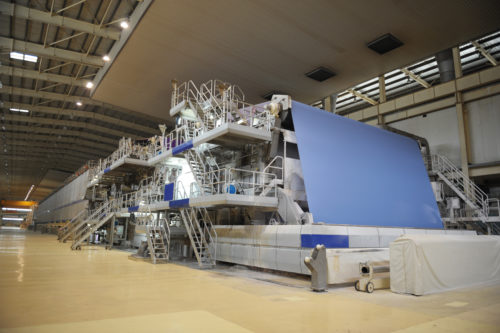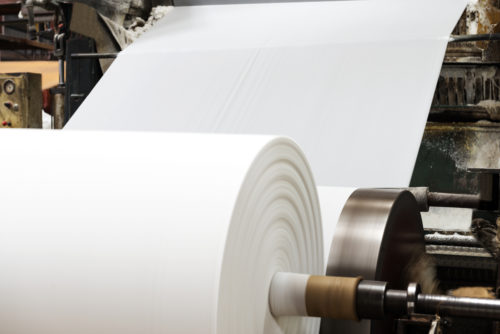Foam in the Pulp & Paper Industry
Lignin, rosin and fatty acid soaps, and hemicellulose are commonly formed during the pulping process, resulting in high levels of foam. Excess foam will negatively impact process and equipment efficiency, leading to inferior or rejected paper. Defoamers and antifoams are a necessity to the entire paper making process.
Why Are Defoamers Necessary in Pulp Mills?
The black liquor formed during pulp production has a strong tendency to foam. The foaming tendency is due to the fact that 12% to 15% of black liquor solids are comprised of NaOH, Na2S, tall oil soap, rosin soap, lignin, hemicellulose and other organic compounds. Defoamers are necessary for pulp washing, screening, and bleaching. Foam problems cause safety issues and poor housekeeping along with the mentioned production problems.
Why Are Defoamers Necessary for Paper Machines?
Foam is often generated through chemical interactions on the paper machine combined with the rapid motions involved in the paper making process. Some of these interactions may involve chemistries from:
- Retention aids
- Fillers
- Sizing
- Fines
- Dry strength
- Wet strength
When paper machines generate foam and entrained air, it adversely affects production rates and paper quality. Defoamers facilitate the process of paper making and help to prevent the following issues:
- Bacteria buildup
- Poor sheet formation
- Drainage issues
- Pump cavitation
- Poor housekeeping
- Safety problems
- Pulp consistency
Slower production rates and inferior or rejected pulp and paper aren’t the only problems caused by foam. For both pulping and papermaking, other foaming issues can create costly outcomes. Foam is detrimental to the environment and can increase effluent COD, BOD, and color levels in the effluent. An excess of foam also creates workplace safety hazards and raises production costs. A few ways foam can increase operational costs:
- Slower production rates
- Increased deposits
- Higher energy costs
- Increasing makeup chemical costs
- Increasing chemical demands on the paper machines
Using defoamers makes the pulp and paper production process safer, more environmentally friendly, and increases overall production efficiency, all while reducing production costs.
Defoamer Applications
A variety of defoamer types serve different defoamer applications. Common applications include:
- Brown stock washing and washing in general
- Bleaching
- Papermaking
- Coatings
- Effluent treatment
Pulp Mill
Utilized in brown stock washing, screen rooms, and bleach plants, pulp mill defoamers are effective at high temperatures and withstand high acid and alkaline conditions of the pulp mill process. Most mills use water-based silicone defoamers.
However, pulping processes involving finished products, such as acetate dissolving pulp, will not tolerate silicone and/or silica. These processes use oil-based defoamers.
Brown stock washing and pulp mill defoamers in general increase production rates by increasing washing efficiency. Increased washing efficiency is accomplished by improved drainage on the washer. Better washing reduces the pulp mill carry-over to the paper machine and will prevent deposits by washing the deposit forming compounds out of the pulp. This way, the deposit-causing compounds leave with the washed out liquor.
Water-based and glycol-based defoamers may be used to control foam in both the screen room and bleach plant. Simultaneously, these defoamers improve drainage and bleaching efficiency by reducing entrained air.
Papermaking
Paper machine defoamers are typically either water-based fatty alcohols or glycol-based products.
Paper machine defoamers are necessary in order to run at or above the designed capacity of the machine. A good paper machine defoamer program will reduce entrained air in the head box and on the formation wire which further increases the drainage on the paper machine. It will also help reduce steam cost on the dryers over and above the capacity of retention and drainage aide programs.
Coating
In small amounts, defoamers are added to coating to prevent fish eyes, give an even coating film, and avoid streaks and holes. In addition to defoamers, other coating additives may include:
- Wetting agents
- Lubricants
- Dispersants
- Water-resistant agents
- Water-retention and rheology modifiers
Effluent Treatment
Defoamers control the foam in effluent systems. Better foam control results in better-treated water before it is released into the environment. Foam control in the effluent system also prevents dried foam from forming on top of the effluent pond, which can be blown into the environment. Water based defoamers are typically used in this application to avoid oil slicks on the waterway the effluent is discharged into.
Applied Material Solutions Defoamers for Pulp & Paper
As paper products have the potential to become indirect food additives, defoamers intended for this application must meet a number of regulatory requirements. At AMS, all our defoamers meet one or more sections of the FDA regulation 21 CFR 176.170, 176.180, 176.200, 176.210. AMS also has defoamers which meet global regulations such as Chinese GB 9685 and German BfR. Our experts are well-versed in federal and international regulations and can help ensure you meet the highest standards, no matter your location.
AMS defoamers provide a significant reduction of foam and entrained air, and when properly applied, there is little impact on paper machine sizing. They’re an excellent choice for resellers looking for an economical, high-quality defoamer with a low environmental impact. Contact us today to find your ideal defoamer solution.





Comments are closed